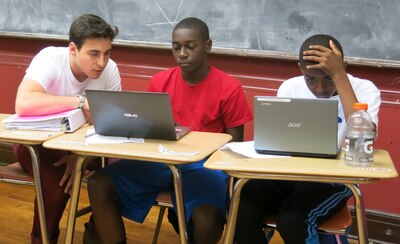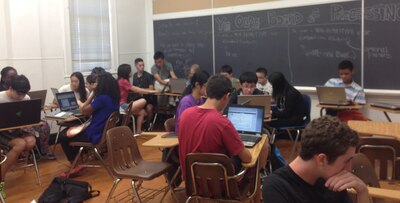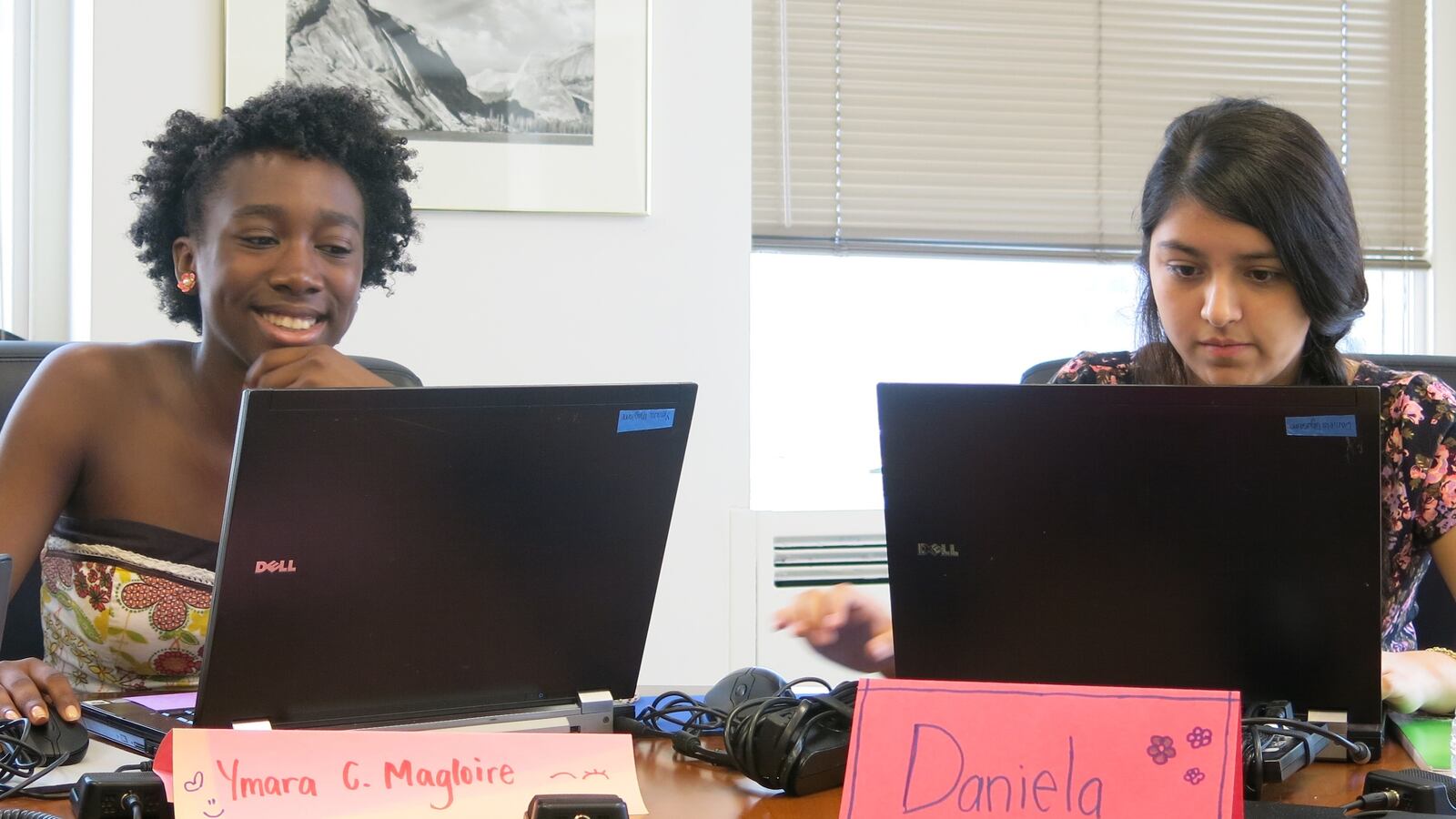In the last two weeks, high school students Sabrina Tom, Soraya Sinclair, and Aminata Dieng built a visualization of an iPhone on a computer. It didn’t make calls, but it did take selfies that saved to the desktop.
The students had never written a line of code before starting Summer Hackers Immersion Program, a summer program for high school students. Over four weeks, they learned to use Processing, a coding environment, and built computer games, officially sparking a new interest.
“It was cool to do all these little projects and realize that I had actually created something,” Tom said.
Like other students across the city, they said they struggled to find coding classes at school. While Tom’s school, Bronx Science, offers computer science courses, the rising senior hasn’t fit any into her schedule. Meanwhile, Sinclair attends Millennium Brooklyn High School, which she said doesn’t offer computer science.
Summer programs like SHIP are full of New York City students, a few of whom have access to computer science in school as coding continues to slowly make inroads into students’ classes and class schedules. As the demand for computer science knowledge grows, more learn-to-code summer programs have popped up to meet the demand—and are increasing students’ interest in computer science classes, too.
Take Girls Who Code, a national organization that attracts girls who are already interested in computer science.
Anah Lewi, a rising junior at the Williamsburg High School for Architecture and Design, applied to the program after trying out the website Code Academy. Now, she’s spending seven weeks at the AT&T office in Manhattan, taking a Girls Who Code class in which she’s learning four coding languages and meeting high-ranking women in the tech industry.
“I think the world has turned into a very technical place, so it seems like a skill that’s so needed,” Lewi said.

Other programs seek students who don’t know much about coding at all. Breakthrough, a sixy-year college preparation program for students from underserved middle schools, added coding into its program for rising ninth graders this summer.
Rhea Wong, Breakthrough New York’s executive director, said she thought computer science skills would allow the students, who are mostly from low-income neighborhoods, to be more competitive when applying to college.
“I hope that this is the tip of the iceberg. It’s something they can pursue in high school,” Wong said.
That’s true at some city schools, which have coding classes tucked into math and science departments or offer after-school clubs. Cindy Gao, chief of staff of the NYC Foundation for Computer Science Education, said the organization expects its programs to be taught in about 100 city schools this year.
“It started growing quite quickly,” Gao said. “From 28 to 100 is a lot, but 100 of 1,800 schools is just over 5 percent, so there’s still a lot of work to go.”
While the Department of Education couldn’t provide a figure for the number of schools offering computer science classes, 18 other middle and high schools are offering systems engineering classes through a city-run program. The city also has two high schools focused on software engineering, and four of 10 new high schools opening this fall will have a focus on computer science as well.
Another group, Code.org, has offered formal training to 60 high school teachers this summer, and another 60 will start next May. That training takes 15 months, although teachers do start working with students during that time.

Mike Zamansky, the computer science leader at Stuyvesant High School, said the challenges of finding computer science teachers are plentiful. It would take a long time, and plenty of money, to train current teachers to teach even one coding language. It’s also a challenge for schools to fit computer science into the school day.
But another challenge is attracting computer science experts who could be good teachers to the field, because schools that do offer coding use mostly introductory programs, he said. A computer scientist teaching Scratch—an introductory, “drag and drop” coding language—would be like a high school math teacher only teaching arithmetic, he said.
Stuyvesant is the district’s only high school to offer a full series of computer science classes, Zamansky said. So he created CSTUY, a nonprofit designed to reach students outside of Stuyvesant, which operates SHIP.
“If we can’t do it within the system, let’s do what we can outside of the system,” he said. “We can’t do as much outside, but at least we can do something.”
Correction: An earlier version of this story called Breakthrough a three-year summer program. It is in fact a six-year college preparation program that includes a three-year summer program.

